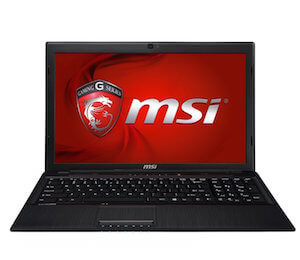 Here we will discuss the ingredients needed for a laptop for Solidworks. We will focus on the best laptop for SolidWorks, because of the much needed mobility for everyone from freelancers to professional CAD designer, illustrators etc. (if you’re working with AutoCad you can check these options for best laptop for AutoCad). SolidWorks due to its industry-wide reputation & fundamental design has become the unofficial de facto for AutoCAD software benchmarks.
Here we will discuss the ingredients needed for a laptop for Solidworks. We will focus on the best laptop for SolidWorks, because of the much needed mobility for everyone from freelancers to professional CAD designer, illustrators etc. (if you’re working with AutoCad you can check these options for best laptop for AutoCad). SolidWorks due to its industry-wide reputation & fundamental design has become the unofficial de facto for AutoCAD software benchmarks.
So let’s dive straight in and talk about criteria. SolidWorks design is so refined, it caters to a large user-base. From newbies to advance modelers and engineers, SolidWorks has a massive following. And that’s one of the things any person thinking of buying a laptop for SolidWorks needs to think about. What’s the use? For educationists and newbies, a single core processor (>1.8 GHz) with 4GB of RAM is enough to get the software up and running.
But like SolidWorks and other available brands/packages state, optimum experiences when dealing with premium-grade renderings or large-scale, detail-oriented modelling require much more juice. The selection process can be rather cumbersome at times so to make it less involving I have divided this section into topics allowing users to adjust the specifications according to their needs. So read on to identify your needs. But if you want to jump to the laptop reviews, then click below:
[table id=33 /]
What to look for in the Best Laptop for Solidworks?
Solidworks Part Modelling
As was mentioned in quite detail previously, part modelling in Solidworks is sequential process that banks on a single core. So if majority of your work revolves around part modelling, choosing a multi-core CPU with a higher clock speed per core is more important than just looking to increase the number of cores. Actually, feature tree in Solidworks is sequential in nature and therefore your CPU must start at the top and work its way down the tree. You cannot allocate one core to start from the top while the other core starts solving from bottom to top. This is because the second core would not know what to work on since the first core hasn’t finished its job. This calls for a single threaded frequency load and that’s where CPU frequency (clock speed) plays its part. Look for Turbo Boost technology in laptop processors as this allows you to overclock CPU cores individually allocating resources to the core that needs them most.
Solidworks Assemblies
Working with assemblies necessitates the use of resources culled from the best available options in hardware. It requires RAM, CPU and Hard drive to work in tandem and to run smoothly. Once you load an assembly you must have enough ram to handle all the parts without having the RAM to look for space in virtual memory. Similarly the RAM needs to be provided with parts quickly to load the assembly so having a SSD will make this process much faster compared to having the parts loaded from a HDD.
Solidworks Drawings
Working on a lot of parts and assembly drawings requires multiple cores since it is a multi-threaded task. Looking for multi core processors in this case is the best option. Solidwork drawing assigns each core a different drawing view and since each drawing sheet generally has more than three views, it would serve you better to have a quad core processor instead of investing in a dual core option. Multicore threading technology is a must so more threads can be allocated to the drawing process. Hence a quad core CPU with Hyper-Threading will outperform a dual core CPU.
Solidworks Simulation & Photoview 360
Both Rendering and simulation are core churning operations so the more cores you have the faster results you are expected to get. I have read a lot of posts alluding to the fact that most people believe rendering is performed by GPU when it is primarily a CPU based process. Some modern rendering programs take advantage of the GPU at times but that does hold not true for majority of the programs. This is normally done by utilizing the GPU’s cores to aid the CPU in rendering processes. When we say rendering is a multi-threaded operation that means it will utilize more than one processor at a time. You can also opt for multiple CPUs depending on the motherboard. If this is your area of interest and you need a quick return on your investment then go for a multi-threaded CPU with turbo boost technology.
Graphics for Solidworks:
For information on GPUs please refer to the previous article here.
Best Solidworks Laptop
This is the point where I recommend the best laptop for Solidworks CAD tool. In general, the more cash you spend the better the experience will be and this applies to CAD as well. So here are my favorites:
Dell Precision M6800 – The Mammoth!
This is a mammoth in the laptop arena by every measure. CADing is a very pleasant experience taking into account the Quad-core Intel i7. Referring to the last article, you know “why Intel!” With that Quad-core processor you get the option of clocking speeds varying from 2.0 – 3.1 GHz. A 2GB GDDR5 AMD card (yes, I know) accompanies the board coupled with 32GB of RAM. The performance as always a Dell trademark is exceptional with a smooth wheezing feeling to all animations and motion-blur renders. The amount of RAM and the number of CPU cores would prove rather handy to those who are responsible for part assemblies because of the size of datasets and bulk of calculations. The simulations & virtual tours/walkthroughs would benefit most from the amount of RAM whereas the rendering itself will be handsomely entertained by the CPU/GPU duo.
[easyazon_link keywords=”Dell Precision M6800″ locale=”US” tag=”cad1208-20″]
[/easyazon_link]
A 17.3” screen with 1600*900 resolution and a 720p camera are certainly nice to have. As far as mobility is concerned, personally this is not too small for CADing. If you want to be mobile and take your CAD gear with you, the screen size is not a reason to cry about. 750G’s of storage, Wifi, Bluetooth 4.0 and the Dell Precision tag complete the package.
| Pros | Cons |
| Heavy weight performance | Just enough battery life for a CAD system |
| No upgrades needed for at least a year | Storage is not SSD |
| 2GB GDDR5 card | Heavy, bulky, design is blunt |
| Intel/AMD combo |
Lenovo ThinkPad W550s – The T-Rex!
Lenovo has always been a personal favorite. The fact that their dual core configurations can compete with the quad cores of others never ceases to amaze me. It’s always a delight to meet an IBM engineer or a fellow IBM-er/supporter, we’re all geeky and we love our blue ThinkVantage button, a true ThinkPad trade mark. In this edition, Lenovo spit out a 2.6 Dual core i7 from Intel, with an NVIDIA Quadro K2100M with a clock of 2GHz. 16 GB RAM and 512 GB SSD handsomely accommodate resource-intensive tasks.
[easyazon_link keywords=”Lenovo ThinkPad W550s” locale=”US” tag=”cad1208-20″]
[/easyazon_link]
The 15.5” display is a 3K multi-touch display with a 2880×1620 resolution with a tiny 720p camera on its top. The battery life is amazing even for CADing and the performance as always lives up to the Lenovo promise. One of the things that I personally appreciate about IBM is the fact that IBM doesn’t really care about design and feel as much as they do about reliability. Even performance is second. Reliability is the number one factor for IBM machines. Following this, the body is bulky and the design is economical. The fact that the CPU cannot be upgraded is the only reason why This IBM follows the Dell instead of preceding it.
| Pros | Cons |
| ThinkVantage! | No quad core option |
| 3K multi-touch, screen | RAM will be wasted with a <3GHz CPU |
| Relatively inexpensive | For extra battery life, battery size is larger |
| Good battery life |
MSI GP60 Leopard – The workhorse!
This is the economical option for power. CADing is smooth even when you’re animating and simulating thanks to the Dual-core Intel i5. With that dual-core processor you get a clocking speeds of 2.9, with Turbo© by Intel – 3.5 GHz. A 2GB NVIDIA GPU supports the board coupled with 8GB of RAM. The performance was what one expects from MSI, top notch. The amount of RAM and the number of CPU cores would prove rather handy to those who are responsible for part assemblies because of the size of datasets and bulk of calculations. The simulations & virtual tours/walkthroughs would benefit from the modest-but-adequate amount of RAM whereas the rendering itself will be handsomely entertained by the CPU/GPU duo.
[easyazon_link keywords=”MSI GP60 Leopard” locale=”US” tag=”cad1208-20″]
[/easyazon_link]
A 17.3” screen with 1920×1080 non-reflective resolution is a good to have. Like I said before, as far as mobility is concerned, personally this is not too small for CADing. If you want to be mobile and take your CAD gear with you, the screen size is not a reason to cry about. 1TB of storage, SSD optional of course. A few things to note are that this laptop is included for those low on budget, so that they may get the needed gear and start CADing. Extra options are available which can be accessed from the following link. But in this price, this is one of the best options to CAD around on.
| Pros | Cons |
| Heavy weight performance | Just enough battery life for a CAD system |
| No upgrades needed for at least a year | SSD is optional & costs extra |
| 2GB GDDR5 card | Heavy, bulky, design is blunt |
| NVIDIA gaming GPU |
Conclusion:
I would go for Lenovo W550s if I had the choice of selecting one. It is cheaper compared to other models available in the market whilst not compromising on performance. My needs dictate part modelling to a major extent with a mere requirement for simulation and rendering needs but don’t get me wrong, this stills works stupendously fast during these modules as well. Fortunately I haven’t been to the insane world of animations otherwise those of you who intend on pursuing this field with your new laptop feel free to invest in a better laptop.
This leaves us with an option for a custom solution. Generally speaking there are very few people who go for this option and are mostly those who either work for a quite big firm or expect a huge return in investment that allows them to afford these machines easily. At the end of the day it is your need that would dictate which specifications you would like to have your laptop made from but for most people like myself out there who enjoy modelling on a daily basis, Lenovo W550s is the best laptop for Solidworks.


